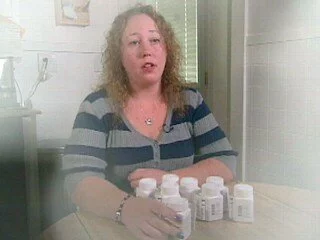
October 10th, 2008
eDrugSearch.com offers news and advocacy for online prescription drug consumers. Subscribe to our blog's RSS feed.

There are a number of good, money-saving prescription drug card programs out there, which eDrugSearch.com will tell you about in our upcoming e-book. But there are also some scams out there — which ABC investigated in this report. An excerpt:
More than 45 million Americans do not have prescription drug insurance. And some have turned to online prescription drug service companies that offer help getting prescription drugs inexpensively in exchange for a fee. Online companies promoting cheap prescription drugs may be misleading…
Without insurance, Andrea [Melnick] was left to try and get pricey epilepsy medications, which cost up to $800 a month, on her own. Andrea looked for help online and found a company called Select Care Benefits Network.
“It sounded perfect,” she said. “It says on their Web site you can get your drugs cheaper.” She said the company offered to get all her drugs for just $30 a month. Andrea paid the company a total of $365, but over the next 10 months, she received only one voucher for a two-month supply of one of her drugs…
According to the Better Business Bureau, when she complained, Andrea became only one of 111 people who filed complaints against the company. Brandon Todd, president of Select Care Benefits Network, told “Good Morning America” that he was “aware” of the complaints, but claimed the company completed its services.
The ABC report advised consumers to try the Partnership for Prescription Assistance (PPA), a program run by Big Pharma that helps people like Andrea, who meet income and other eligibility requirements. Andrea could have simply gone here to get started.
Unfortunately, as eDrugSearch.com members well know, most Americans without prescription drug insurance do not meet the requirements for PPA assistance.
Posted by Cary Byrd in Drug discount cards, Healthcare solutions, Online pharmacies, Pharma bloggers, Prescription drugs.Technorati Tags: Drug discount cards · Healthcare solutions · Online pharmacies · Pharma bloggers · Prescription drugs
October 10th, 2008

I stumbled across this while reading Gawker: “Teen socialite” Peaches Geldof says the staff at the fashion magazine Nylon prefer prescription drugs over illegal drugs –
What’s the drug of choice at Nylon? “Klonopin.” Peaches was definitely the talky one. Why? “It’s just a very large prescription drug culture.”…
This confirms our highly anecdotal evidence of Klonopin as a mini-trend for the creative underclass, maybe better than Xanax—not that our shrink is offering to prescribe us any despite repeated inquiries.
Klonopin, classified as a “sedative-hypnotic,” is prescribed for epilepsy, panic and anxiety disorders, restless legs syndrome and other medical conditions. Unfortunately, such drugs are too easily obtained by young people, who often start taking them by raiding their parents’ medicine cabinets.
As Ritch Wagner of Purdue Pharma (OxyContin), who educates medical professionals and law enforcement officials about the dangers of prescription drug abuse, describes the growing problem:
More prescription drugs are creeping up the list of the 20 most widely abused substances, Wagner said, including the painkiller hydrocodone and methadone, a narcotic commonly used to treat heroin addiction that is now used to treat pain.
Abusers are beginning to learn it can “be more advantageous” to use prescription drugs to get high than drugs such as meth, cocaine and heroin. They are easier to obtain, and people think they are safe because doctors prescribe them.
“In my day and age, it was how many of Dad’s beers we can sneak out of the fridge,” Wagner said. “Now, it’s how many pills can I get out of the medicine cabinet.”
Wagner said children are taking whatever pills they can get their hands on, throwing them into a bowl and taking a handful. They’re called punch-bowl or grab-bag parties.
I think what really struck me about these stories was Geldof’s use of the term “prescription drug culture.” I hadn’t heard the term before.
My immediate reaction was to compare it to the “drug culture” of the ’60s and early ’70s, which we relate to young people — specifically, “hippies.” But upon reflection, the “prescription drug culture” isn’t confined to the young in our country today. It’s pervasive.
It starts with the billions of dollars in advertising that pharmaceutical companies spend to get us to stock our medicine cabinets with drugs — drugs that we might or might not really need.
Before the recent advertising campaign, for example, I’m guessing you’d never even heard of restless legs syndrome — let alone gone to the doctor and asked for Klonopin or Mirapex. The medical use of drugs like Xanax and Prozac have gone through the roof among adults of all ages. And don’t you suspect the Viva Viagra! advertising campaign has made Viagra an object of curiosity not only among middle-aged men, but among teenage boys?
When a teenager’s parents, as well as all of his or her friends’ parents, are stocking the medicine cabinet with these drugs, don’t you think what happens next is almost inevitable?
So, how do we solve the problem? Frankly, as I’ve stated here before, I would put an end to direct-to-consumer advertising by pharmaceutical companies.
Others may disagree with this approach, and that’s fine. But however we get there, we need to reach a point where we don’t expect a “pill for every ill.” Because if you believe there’s a pill for every ill, it’s a short step to believe that prescription drugs are the answer for everything — including having a good time at a party.
Posted by Cary Byrd in Healthcare100, OxyContin, Pharma bloggers, Pharmaceutical companies, Pharmaceutical marketing, Prescription drug abuse, Prescription drugs, Purdue Pharmaceutical, Xanax.Technorati Tags: Healthcare100 · OxyContin · Pharma bloggers · Pharmaceutical companies · Pharmaceutical marketing · Prescription drug abuse · Prescription drugs · Purdue Pharmaceutical · Xanax
October 10th, 2008
-
6 Best Ways to Support a Loved One Who Has Cancer (Pink Ribbon Review)
-
$85,000,000,000,000 and Counting . . . (Insure Blog)
-
One citizen in Iceland apologizes on behalf of his government (The Peter Rost Blog)
-
Health Insurance Is A Right. Health Insurance Is A Responsibility. (GoHealth Coverage Corner)
Subscribe to the eDrugSearch Blog with Bloglines:

Posted by Cary Byrd in Healthcare blogs, Healthcare100.Technorati Tags: Healthcare blogs · Healthcare100
October 8th, 2008

Those who would minimize the crisis that is the U.S. healthcare system would have you believe, among other things, that the problem of high-priced prescription drugs mostly affects the elderly — who supposedly have gotten the relief they need from Medicare Part D and a multitude of state programs.
This is simply not the case.
The Los Angeles Times reports on a pharmacy benefit manager’s study that states:
…nearly 70 percent of adults aged 25-34 claim the economic downturn of the last 12 months has made it somewhat or significantly more difficult to pay for health care expenses … Overall, three out of four people are concerned about the cost of health care…
The Times speculates as to the reasons for increasing concern among young adults:
A couple of things might be going on with young adults. First, problems like diabetes and heart disease are hitting younger people these days, connected to the growing rates of overweight and obesity among younger Americans, so more of them are taking prescription drugs than in the past. And second, young people are hit with economic hard times when they may still be paying off college loans and beginning to set up independent lives with their own rent, mortgages or car payments.
Older prescription drug users are more savvy about asking their physicians for cheaper, generic versions of drugs, and to use mail order pharmacies to save money, according to the survey.
So it seems that everyone is worried, and youth itself doesn’t necessarily let people off the hook.
Amen to that. Many eDrugSearch.com members are seniors, for the reasons the Times post states — they are savvier consumers. They have had to search for ways to cope with the issue of skyrocketing prices for years, because a sizable percentage of seniors take five or more different prescription drugs per day.
Young people are much more likely to take only one or two prescription medications regularly. But prices are now so high that even that can bust a budget, especially if one of those drugs has been dropped from an insurer’s co-pay list.
To cite an example I gave earlier this year:
I have a friend on an oral chemotherapy drug who, despite being fully insured through her employer, was still forced to pay thousands of dollars for her medication. Needless to say, this came as a shock to her. It’s hard enough to go through chemo without having to pay thousands of dollars for a few bottles of pills.
Insurers keep moving the goalposts on the definition of “being covered” in this country. Standards of coverage pale in comparison to what they were 20 or even 10 years ago. And yet the premiums continue to increase far more rapidly than the inflation rate.
Posted by Cary Byrd in Drug costs, Prescription drugs.Technorati Tags: Drug costs · Prescription drugs
October 8th, 2008
-
Get thee behind me, Big Pharma! (The Migraine Girl)
-
Big Pharma Problems (All Things Whistleblower)
-
Cleaning the Stables (PharmaGossip)
-
Pfizer’s New Focus Will Usher in a Golden Age of Pharma Social Media Marketing (Pharma Marketing Blog)
Subscribe to the eDrugSearch Blog with Bloglines:

Posted by Cary Byrd in Big Pharma, Pharma marketing.Technorati Tags: Big Pharma · Pharma marketing
October 6th, 2008
-
The Health 2.0 Blog: Genomics Diagnosis is ahead of treatments (Health BlogGirl)
-
Lurkers in Health 2.0, Do They Benefit? (Dr. Shock)
-
Health Fool Point Oh! (crossover Health)
-
Trials and tribulations in the health 2.0 sphere (Syndicom)
Subscribe to the eDrugSearch Blog with Bloglines:

Posted by Cary Byrd in Health 2.0.Technorati Tags: Health 2.0
October 3rd, 2008
I don’t believe any nation — even one as great as the United States — should ever rest on its laurels. For this reason, I shout from the rooftops about the changes that I believe we need to make as a country, particularly when it comes improving our healthcare system. I believe that is the duty of every citizen.
If you read this blog regularly, you know my story. I am suspicious of the motives and actions of large pharmaceutical companies. I am concerned that our government is not doing enough to protect us from corporate influence that leads to unsafe drugs being OKed by the government, skyrocketing prices for brand-name medications, and a lack of competition among drug companies both domestically and internationally. I believe these are critical problems that must be addressed.
But as I sit here in my office looking out on a beautiful Texas afternoon, I’m reminded that it’s so important to remember our blessings as a society. I’m reminded, specifically, how important it is to acknowledge the advancements of science and medicine — including, yes, those of pharmaceutical companies — that have made life easier (and longer) than it was for previous generations.
In fact, if you factor in all the risks we’ve faced over the years, American families probably live in the safest period in our history.
Violent crime is low — much lower than it was in the ’70s, for example. Infant mortality is low, people are living longer, and though we certainly need to fix our healthcare system to build upon these gains, it’s important to acknowledge them.
As an advice column I read in the Washington Post today tells a grandmother frustrated with her daughter-in-law’s constant worrying:
You seldom see any small, new headstones in the cemetery anymore, because most children are healthy enough to grow up and grow old. However, if you told your daughter-in-law that antibiotics and vaccines had doubled life expectancy in the past 100 years, she would still be anxious.
Being anxious doesn’t help anybody. Be grateful. And be determined to seek the changes that will ensure continued progress.
Posted by Cary Byrd in Healthcare solutions.Technorati Tags: Healthcare solutions
October 3rd, 2008
-
Bad News, Delivered Badly (The New York Times Health Blog)
-
EU Plan Gives Pharma Direct Access To Patients (Pharmalot)
-
Political Science (Stayin Alive)
-
It’s time to find joy again - and it’s hiding right under your nose! (Chronic Babe)
Subscribe to the eDrugSearch Blog with Bloglines:

Posted by Cary Byrd in Healthcare100.Technorati Tags: Healthcare100
October 1st, 2008
I think the best story I read on Monday’s $425 million Cephalon settlement was the law firm Phillips & Cohen’s press release:
The government’s investigation into Cephalon Inc.’s illegal marketing practices that culminated in today’s $425,000,000 settlement and guilty plea by the pharmaceutical company began in January 2003 with a Cephalon sales representative in Ohio.
The sales representative, Bruce Boise, refused to follow company-ordered sales strategies to convince doctors to prescribe Cephalon’s Actiq, Gabitril and Provigil drugs for unapproved (”off-label’) uses because he was worried the sales practices were illegal and the “off-label” uses were dangerous for patients.
Boise was so concerned about Cephalon’s off-label marketing that he contacted the Food and Drug Administration (FDA) to inform them of what the company was doing and then agreed to wear a wire to a company sales conference to help the government gather evidence.
The decision to report Cephalon to the FDA cost Boise his job and future employment in the pharmaceutical industry. But his information helped end Cephalon’s illegal marketing practices that put patients at risk and led to today’s settlement.
The line that really hit me — perhaps because I’m relatively unfamiliar with corporate culture, having spent my life as an entrepreneur — is that Boise’s actions cost him the opportunity for “future employment in the pharmaceutical industry.”
Maybe I’m crazy, but if we lived in a world where the pharmaceutical giants were good corporate citizens aspiring to do things on the up and up, wouldn’t Bruce Boise be exactly the kind of guy they would want to hire?
I guess not. I’m reminded of a famous quotation by somebody or other: “Capitalism is the belief that the wickedest of men will do the wickedest of things for the greatest good of everyone.”
I tell you what, though, Bruce. If I had a job for you here, I’d offer it to you in a heartbeat.
Posted by Cary Byrd in Pharmaceutical companies, Pharmaceutical marketing.Technorati Tags: Pharmaceutical companies · Pharmaceutical marketing
October 1st, 2008
-
Big Pharma (PhRMA) Hammered on Boston Legal (Side Effects of Antidepressants, Antipsychotics…)
-
Big Pharma Cuts Costs (Business World)
-
Pharma’s deep pockets means more M&A (Pharmareports)
-
Big pharma veers to the left (POLITICO)
Subscribe to the eDrugSearch Blog with Bloglines:

Posted by Cary Byrd in Pharmaceutical companies.Technorati Tags: Pharmaceutical companies





